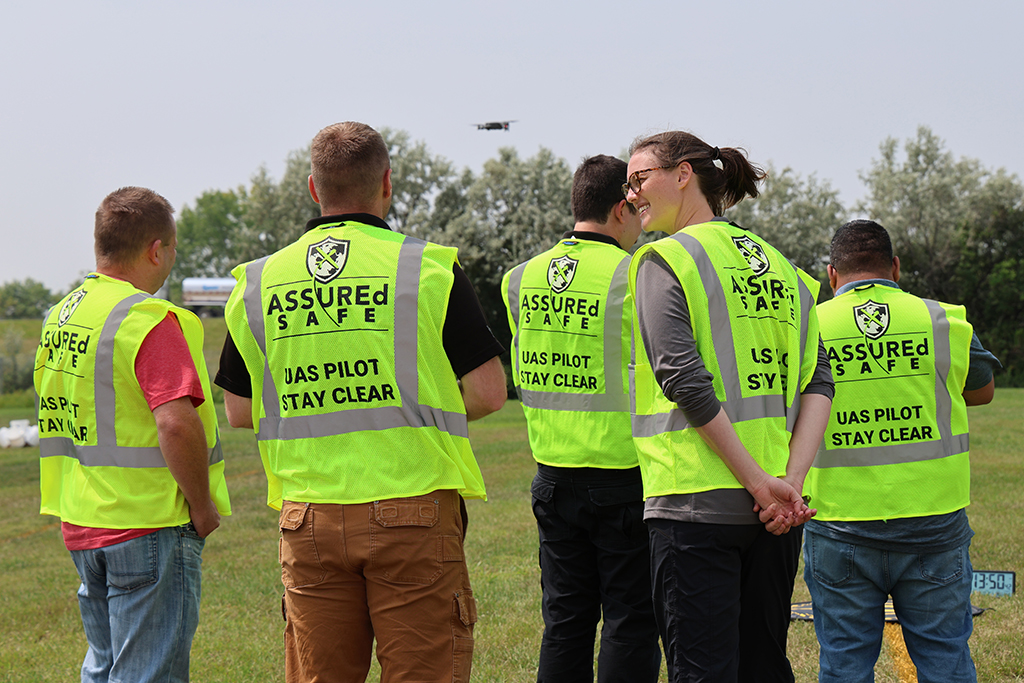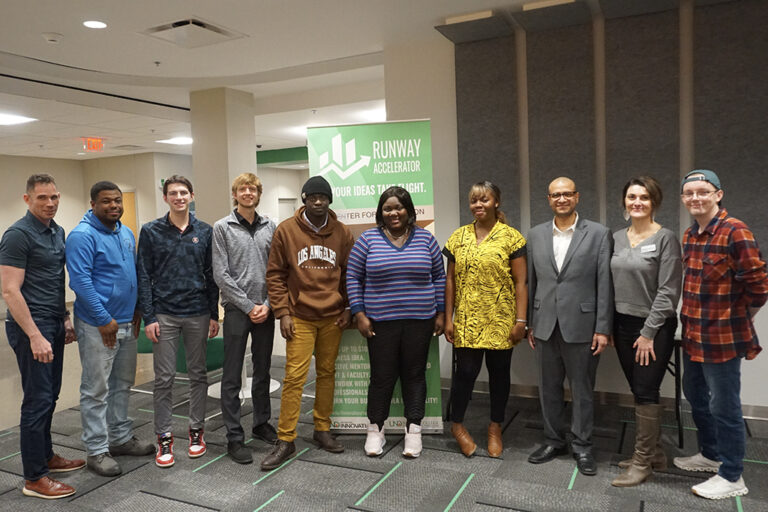UAS training for first responders held at UND
On-campus UAS training for first responders aims to develop vital 21st century skill

At a free seminar hosted by UND recently, first responders from across the Red River Valley and North Dakota had the chance to become better pilots of uncrewed aerial systems.
The two-day course — a first for UND — was held at Ryan Hall on July 18-19. Representatives from the North Dakota Parks and Recreation Department, Fargo Police Department, Grand Forks Fire Department and University Police Department attended the training.
The program is a new offering from the Alliance for System Safety of UAS through Research Excellence (ASSURE), a coalition of universities that provide expertise to the Federal Aviation Administration’s Center of Excellence for Unmanned Aircraft Systems. UND is among the Core Universities in the ASSURE Coalition.
The training, called “ASSUREd Safe,” came at no cost to North Dakota, UND or the training participants, as it was fully funded by the Federal Emergency Management Agency.
Paul Snyder, assistant chair of the Aviation department and director of the UAS program, and James Moe, chief UAS flight instructor, previously undertook the ASSUREd Safe training.
Moe, speaking to participants on July 18, said he found the training “enlightening.”
“We’re trying to integrate possible resources located around the state, gather all those resources and then put them together into one repository, depending on the nature of an emergency response, whether it’s flooding or tornado or whatever the case might be,” Moe told the attendees.
The two-day training session started with classroom instruction on UAS flight operations. Later that first afternoon, attendees participated in hands-on drone flying exercises under the supervision of UND UAS instructors. Trainees flew drones through a set course to align with certain targets in a set amount of time. The second day of the training covered data analytics for first responders.
The idea of the training is to create a standard for all first responders, should different groups be called to work together in an emergency situation, such as a natural disaster. Each group, fire fighters from different fire departments, for example, would then have a standardized system of training that allows them to seamlessly cooperate should they be called on to use drones to map segments of a forest fire, flood zone or other disaster area. The training also covers how to manage and integrate the enormous amount of data gathered by drones.
“It’s been meaningful for me,” said Gabriel Bjergaard, with the North Dakota Parks and Recreation Department. “It’s great training. I’ve learned a lot.”
According to ASSURE, there is no nationally established credentialing authority in the United States that can provide training for first responders. This lack of a credentialing organization means there may be a shortage of qualified UAS pilots that can be called upon in disaster situations. The training “assures” that pilots who may be from different areas not only know how to coordinate together, but also how to safely operate uncrewed aerial systems to gather needed data, or participate in lifesaving actions.
The ASSURE Coalition is led by Mississippi State University, which has worked to develop the ASSUREd Safe training program. The program will continue to be made available across the United States and will roll out both online and in-person courses for all skill levels, as well as conduct instructor training.
Along with MSU, UND is among the 17 Core Universities in the ASSURE Coalition. Eleven other universities are also affiliated with the program. The Coalition is joined by more than 100 different leading industry and government partners.



